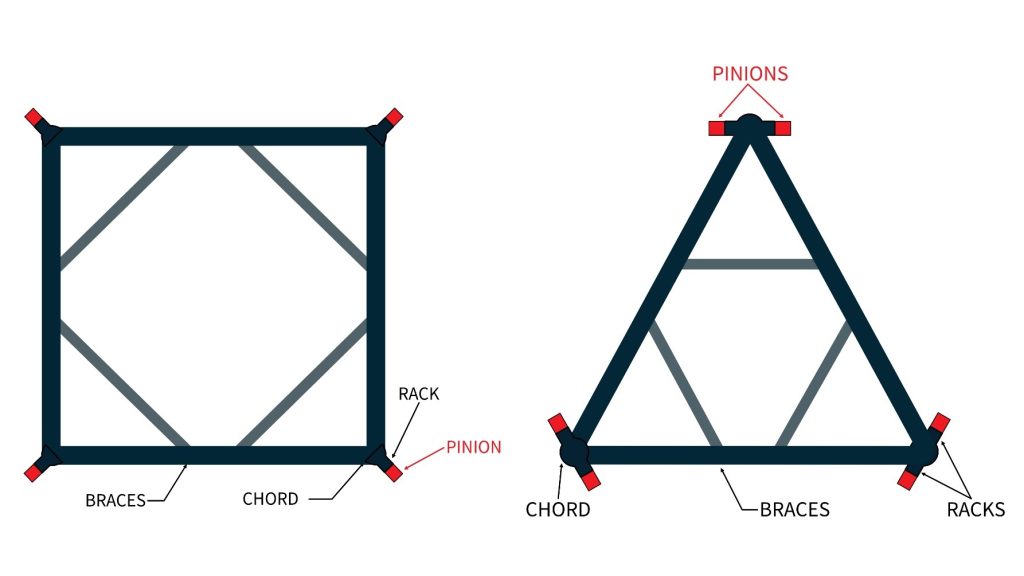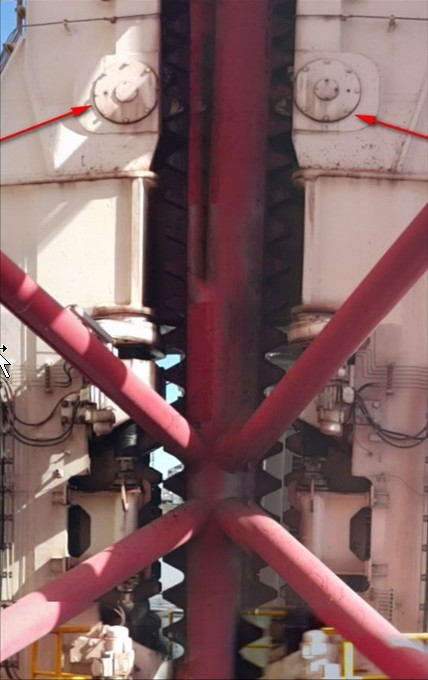Pinions are an essential component of jackup barge legs, and their design can significantly impact the stability of the platform. Depending on the leg design, pinions could be installed in two ways: RADIAL and OPPOSED.

Radial pinions have only one rack on each chord, where pinions are installed only on one side.
In contrast, opposed pinions have two racks on each chord, where pinions are installed on both sides, one opposite to another.
The way pinions are installed is important because they transfer the vertical and horizontal forces to the leg. The whole weight of the hull is concentrated at the points where the rack is touching the pinions (rack-pinion interface).
The advantage of the opposed pinions is that the load is balanced between the two pinions on the same chord. Better load distribution along the leg allows for shorter jacking tower. A shorter height means a simpler and cheaper design, and less weight.
With the radial pinion arrangement, the weight burdens the inner structural elements of the leg (bracing). Due to this imbalance, bending of the chord may occur, which is a drawback.
The advantage of the radial arrangement is that, because of the higher jacking tower, the upper guides are further apart from the lower guides, which contributes to the strength of the entire structure


The images show the opposed arrangement of pinions (Teras Sunrise).
Each leg has 3 chords (A, B, C), and 8 pinions on each chord.
A system of sensors and electronics measures the total and individual load on the pinions, load distribution, RPD, and other parameters.